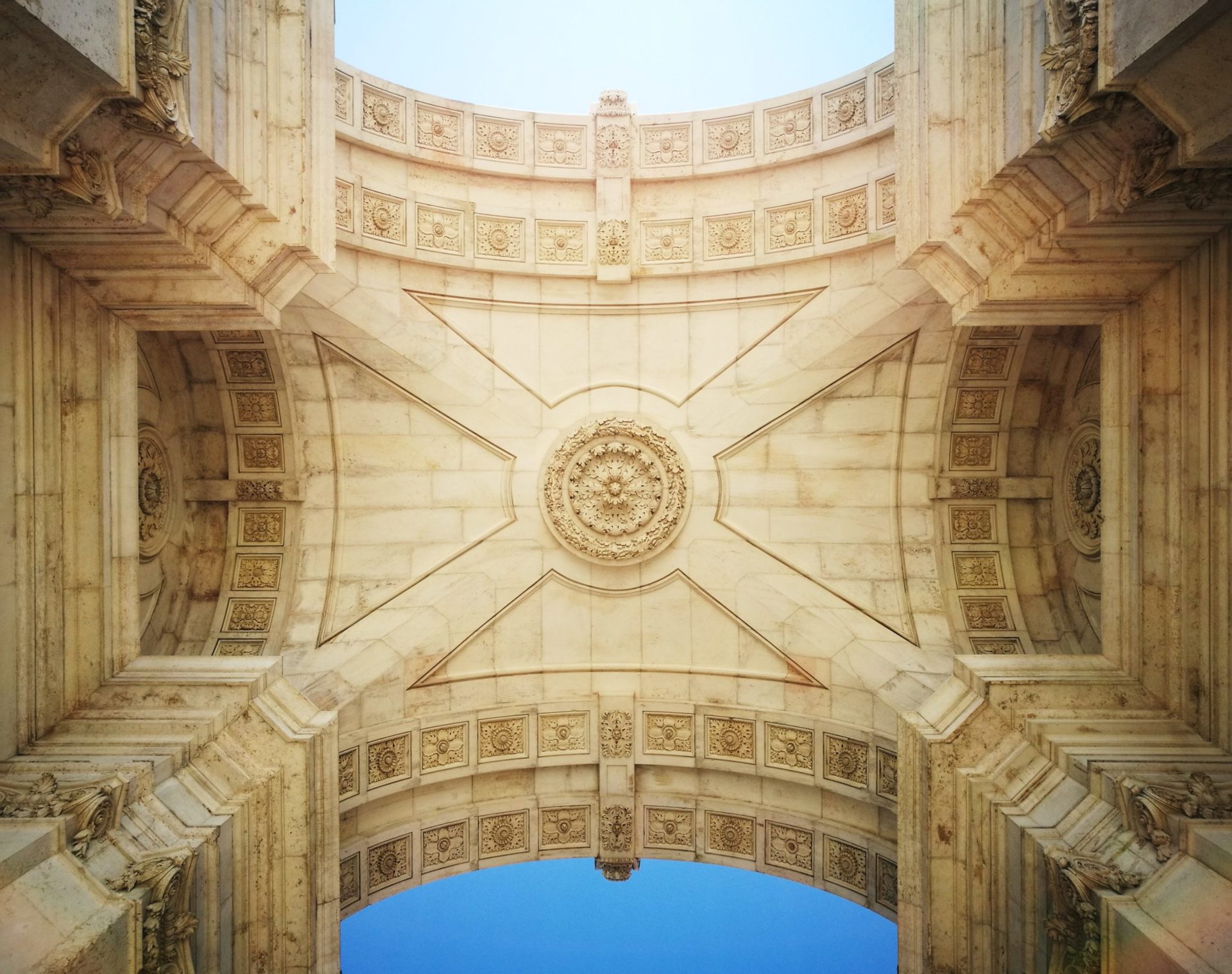At seventy-something years of age, retired and settled in Oeiras for the last twenty years, I have had the gift of time to look back on my life to figure out why and how it came to be. My love affair with Portugal and its culture goes back to my earliest days.
I was born in Rhodesia, now Zimbabwe, and spent most of my young life there – but I had a good introduction to Portuguese traditions and culture in Goa, where I lived during my early school days. Prior to 1961, Goa had been under Portuguese rule for about 500 years. Upon completion of my secondary schooling, I returned to Rhodesia as my father ran a grocery store there. Some of the popular Portuguese delicacies like chouriço and azeitonas were spooned out from round twenty-litre barrels into containers, which were weighed to be sold to customers. This was a decade or more before the era of self-service supermarkets; shopkeepers dealt with customers from behind a counter. Arroz refogado (sauteed rice with slices of chorizo) was a treat for Sunday lunch.

I remember flying to London, via Lisbon, in the 1970s. The Portuguese national airline, TAP, and its tourist office were making a bid to encourage visitors: they offered a free three-night hotel stay to passengers of the airline. I took them up on the offer. On several occasions, passing through Lisbon, I stayed at the Miraparque Hotel, located in the avenue adjoining Parque Eduardo VII. I was in my early thirties by this time, and well acquainted with some of the finer points of the Portuguese way of life. After checking into my hotel and freshening up, I usually made my way to a restaurant on the corner, where I would order a bottle of Casal Garcia, sit at a table on the esplanada, and watch the people go by. This has become such a fond memory.
My twin daughters completed secondary school in Zimbabwe, and then went on to university in the UK. We decided to emigrate, and our country of choice was Portugal. Of course, my daughters and my wife would have preferred the UK – but I had lived and worked there for a time, and I knew that the weather and the way of life would be an impossible adjustment for me. That’s how Oeiras, on the Avenida Marginal, became our new home.
After checking into my hotel and freshening up, I usually made my way to a restaurant on the corner, where I would order a bottle of Casal Garcia, sit at a table on the esplanada, and watch the people go by.




Living so close to Lisbon has given me the chance to discover one of its greatest treasures: the Gulbenkian Museum. I have been there at least seven or eight times, and I continue to take my visitors there, knowing that they will come away happy and satisfied. But I make sure they do a bit of homework so that they know what to expect: part of this experience is knowing a bit about Calouste Gulbenkian, and how his tremendous wealth he later bequeathed to Portugal.
Calouste Gulbenkian was an Armenian engineer who found success in the field of oil-extraction and drilling technology in the 1920s. As Henry Ford began to mass-produce the Model T and the automobile boom began, Gulbenkian, found himself in the right place at the right time. His expertise at oil extraction was much sought after. Astute as he was, he began advising major oil companies on concessions and mergers in order to generate the capital required to exploit this new resource. And for his fee he was prepared to accept 5% of the shares in the merged company. He was soon given the nickname “Mr. Five Percent.” The most famous of these mergers was the amalgamation of the Royal Dutch Petroleum company with Shell, five percent of which was very lucrative indeed.
With the market for petroleum thus poised to increase exponentially, he soon amassed a fortune. Gulbenkian was a man of very fine taste, and bequeathed many of the treasures that he collected during his life to what is now known as the Gulbenkian Museum.
When Gulbenkian died, he left a major part of his fortune to Portugal. Beyond the treasures collected during his lifetime, he created a foundation that continues to support the arts and culture in the country.




So how did Portugal come to inherit these treasures? It was quite a twist of fate. Because of its famous museums, Britain was the country that Mr. Gulbenkian had favoured to care for his legacy – but a dispute during the Second World War prompted the British authorities to freeze Gulbenkian’s shares in Iraq Petroleum. This aroused his ire, and – despite getting his valuable shares back later – Gulbenkian never quite forgave them. Gulbenkian found himself welcome in Portugal, which had been neutral during the war, and by all accounts he was happy here. He had a permanent suite at the Hotel Aviz in Lisbon, which Life magazine had described as one of the most sumptuous hotels in the world in the 1950s. When Gulbenkian died, he left a major part of his fortune to Portugal. Beyond the treasures collected during his lifetime, he created a foundation that continues to support the arts and culture in the country.
His art collection of more than 6500 pieces is reckoned to be one of the best collections of art in the world, ranging from antiquity to the twentieth century and hailing from around the world: ancient Egyptian artifacts, Roman and Greek gold coins, beautiful ceramics of the Ming and the Song dynasties, ceramics from the Moorish period of Europe between the 8th and the 15th centuries, exquisite art nouveau jewellery…. the list is endless. There are also items of furniture and marble sculptures, paintings by the Masters and other famous artists. Having visited the museum often, I can describe some of my favourite pieces from memory.
The first is a gold medallion of Alexander the Great, which had been discovered at the Qir excavations and which Gulbenkian bought in Egypt. The remarkably clear-cut features of Alexander – his Roman nose, his characteristic curls – are a marvel to look at in this numismatic relief. When one realises that the medallion dates to 300 BCE, one cannot help but gasp.
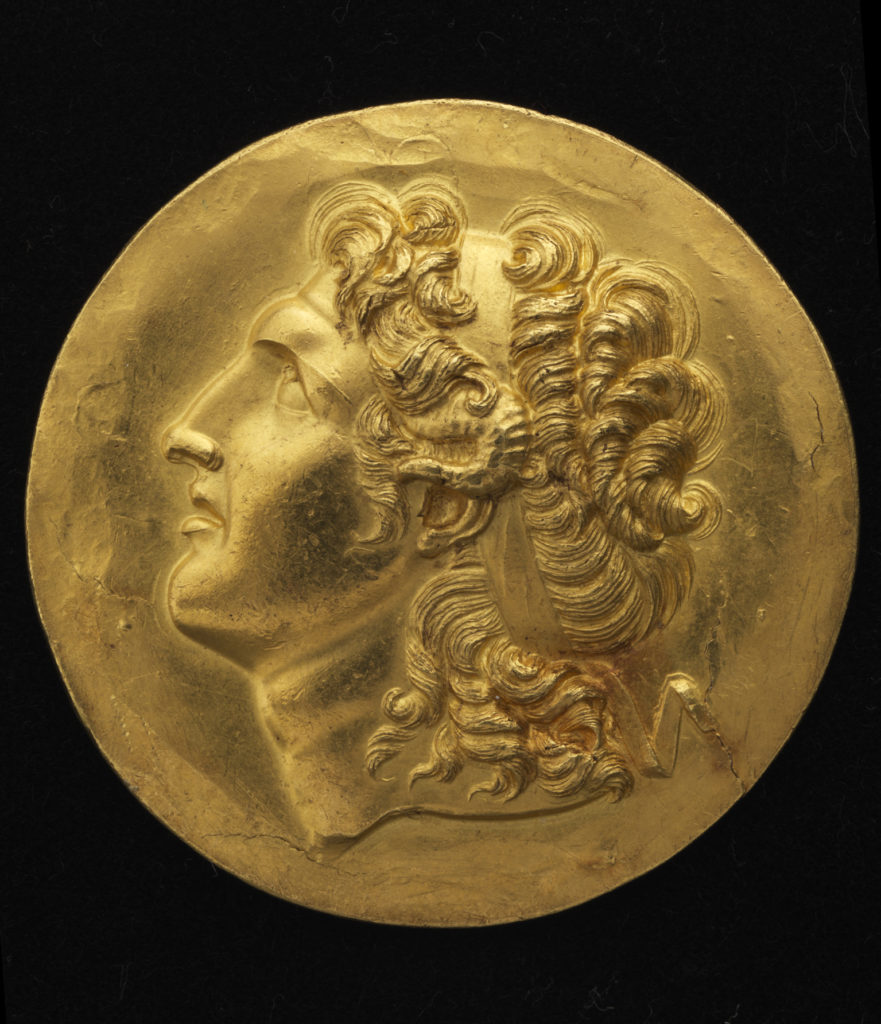



The Art Nouveau jewellery in the Lalique Room is similarly thrilling for me. Rene Lalique was an exquisite craftsman and jeweller, who also happened to be a close personal friend of Gulbenkian. The galleries at the Gulbenkian Museum seem to spill into one another in a series, and the Lalique room is toward the end. I like to go all the way through the museum to the Lalique room, my favourite of them all so that I can enjoy it with a fresh mind. Sometimes I feel mentally saturated and even exhausted, being surrounded by so much beauty, so I limit myself to what I truly enjoy the most. I find that it’s a good strategy.
The Dragonfly brooch is considered one Lalique’s most spectacular creations. It is made of gold and enamel, its wings tipped with diamonds, enamels and moonstones. From the open jaws of the dragonfly rises a bust of a woman in chrysoprase. On both sides of this figure’s headpiece there is an exquisite chimera, worked in gold: a hybrid creature that is both a woman and a beetle.
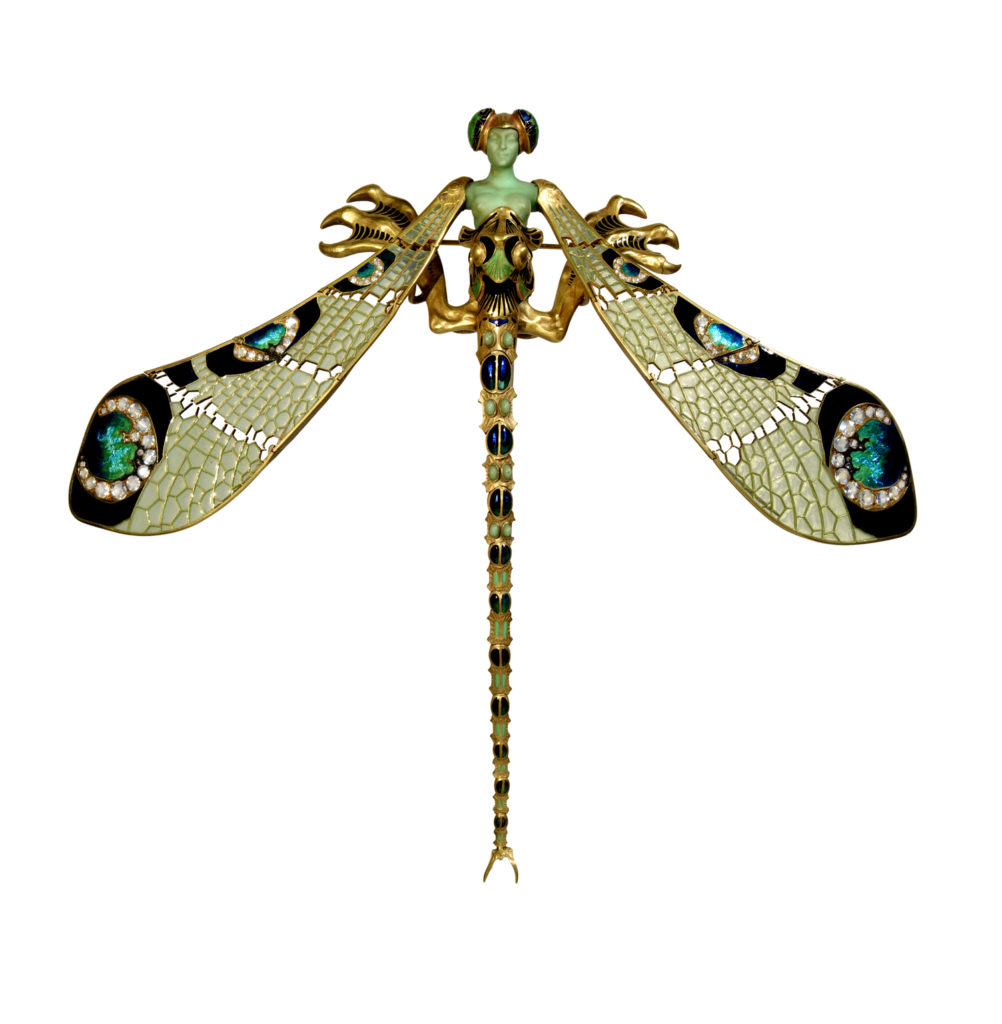



Lalique was a consummate craftsman not only in his technique, but also in his ideas and his visionary selection of materials. Capricious materials and concepts that seem paradoxical or even bizarre become sublime in the hands of Lalique, whose panache makes the work seem almost easy. The Chrysoprase that he uses for the bust is associated with joy, happiness and healing. It also has associations of energising of the heart and sacred chakras. Its wafer-thin filigree work is best appreciated up close—an image zoomed in on a mobile phone reveals the incredible delicacy.
Rene Lalique was a pioneer and trailblazer in his use of apparently mundane materials like horn and ivory that would ordinarily be considered downmarket for jewellery material. But he used their colour and contrast to create objects of outstanding beauty. The three-pronged comb is made of ivory and horn worked into three orchids. The centre one, wrought of ivory, is tipped with a citrine gemstone on its tongue. The contrasting colour of the side orchids, made in horn and bearing the subtlest gradation of shades of light brown and beige, enhance and highlight the centre one. Citrine is meant to attract wealth, prosperity and success, and improves self-esteem and confidence.
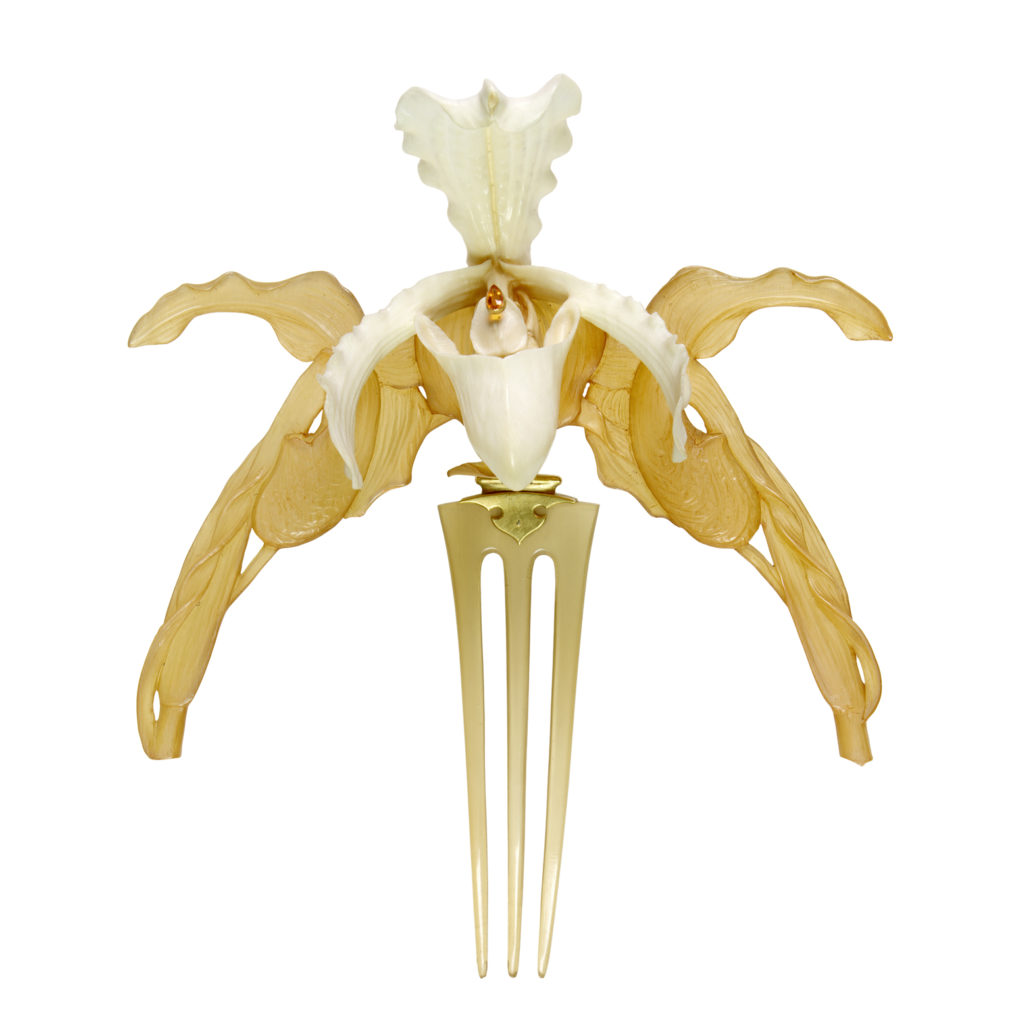



Imagine this comb delicately poised in a lady’s hair. Imagine her walking into a room, smiling and radiating confidence. Any man would be dumbstruck. I would go further and say that what Rene Lalique has done is to create a charm that causes a man to fall in love with the woman that wears it. Such is the power of his artistry. The comb has a gold hinge to allow it the flexibility to sit just right.
These are three of my favourite pieces, but every item on display has its own beauty. And I know that I will continue to visit the Gulbenkian Museum because there is still so much to learn and enjoy among its varied treasures.
I had set my heart on getting a smallholding in the highlands of Zimbabwe, but I ended up living in Portugal on the outskirts of Lisbon. And, without doubt, it is one of the finest places in the world to be.
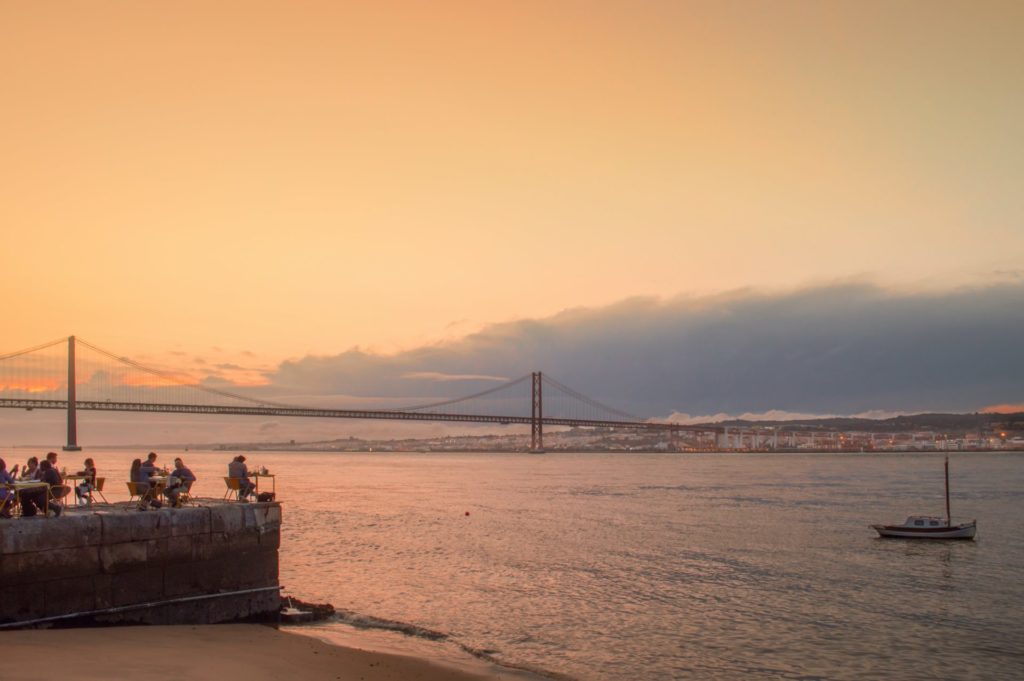



In conclusion, given the twists and turns and ups and downs and the uncertainties of life, it is difficult to predict where one will eventually end up in retirement. I had set my heart on getting a smallholding in the highlands of Zimbabwe, but I ended up living in Portugal on the outskirts of Lisbon. And, without doubt, it is one of the finest places in the world to be. And I know that if I was asked why, my answer would be a resounding “It was meant to be.”

